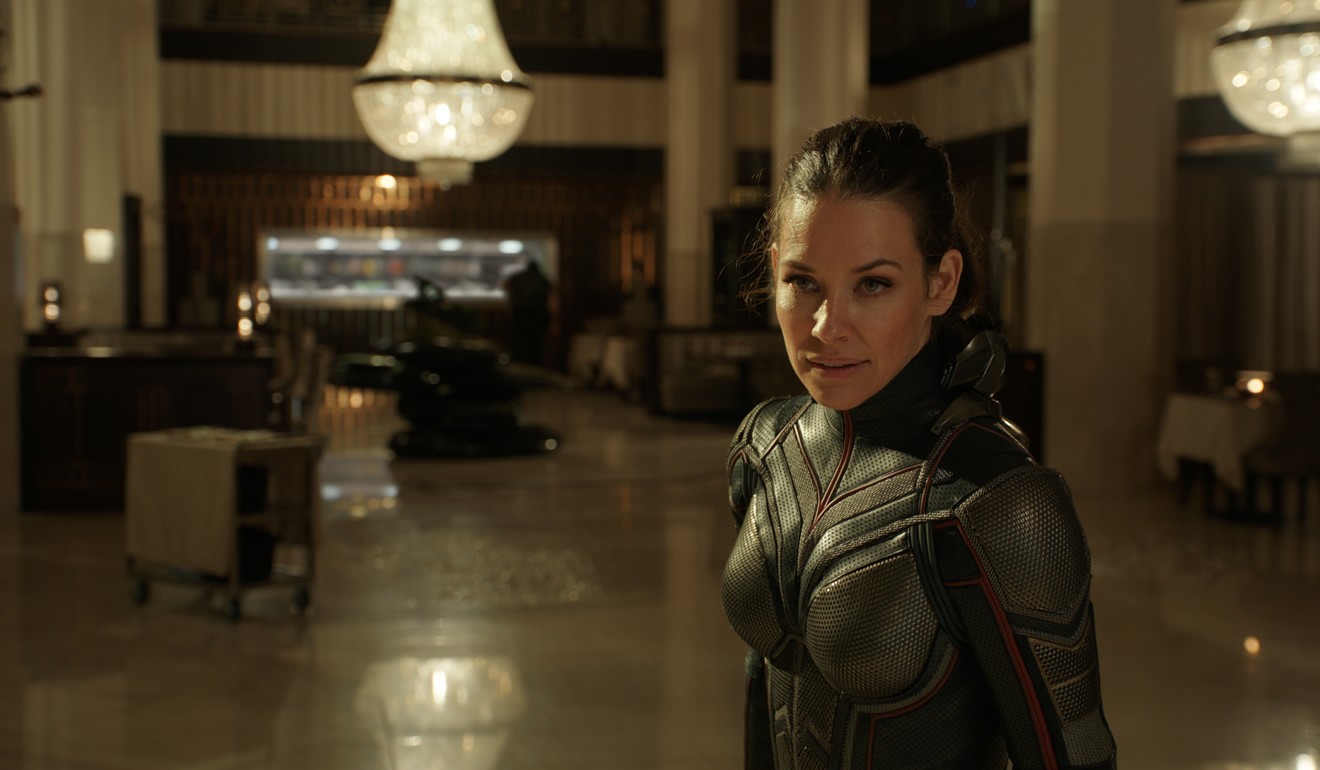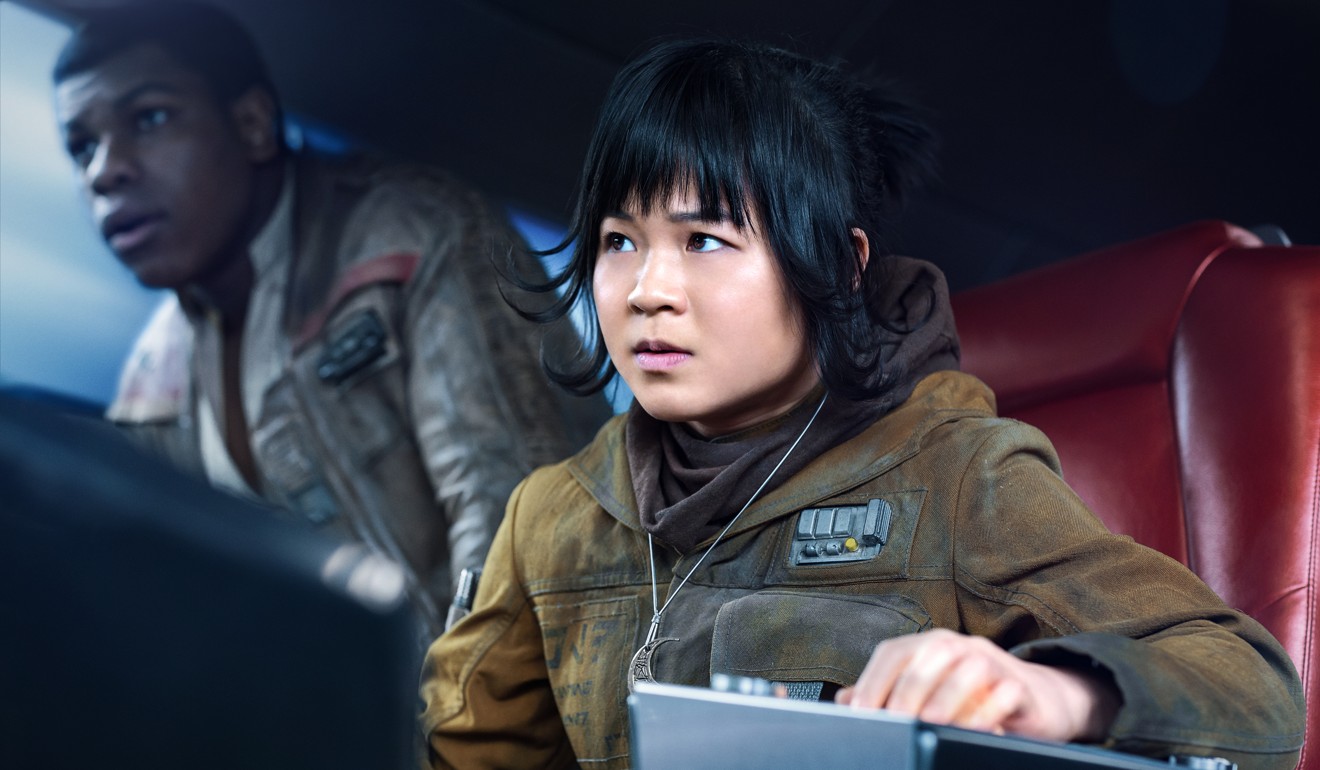
Time for Hollywood to take more notice of female movies after Ocean’s 8’s box office success
The female heist movie starring Cate Blanchett and Sandra Bullock took US$41.5 million in its opening three days in the US, proving that films starring A-list actresses are just as popular as those featuring their male counterparts
When Cate Blanchett claimed the second Oscar of her career in 2014 – a best actress gong for Woody Allen’s Blue Jasmine – her acceptance speech was delivered with a sting in the tail. “Those of us in the industry who are still foolishly clinging to the idea that female films with women at the centre are niche experiences ... they are not,” she said. “Audiences want to see them and, in fact, they earn money.”
Indeed, Allen’s film about an unhinged Manhattan socialite grossed US$97 million; prior to that, in 2011, Paul Feig’s female-driven nuptials comedy Bridesmaids did even better, claiming US$288 million at the box office. At the time, these were seen as almost freak exceptions – films that somehow got made in spite of a male-skewed hegemony in studio boardrooms.
If the perceived wisdom was that movies where men are relegated to support don’t play well, then this is gradually being consigned to dinosaur thinking. This last week saw Ocean’s 8 – starring Blanchett, Sandra Bullock and a host of other A-list actresses – take US$41.5 million in its first three days in America, beating the likes of Solo: A Star Wars Story and Deadpool 2 to the number one slot.
Gravity? Miss Congeniality? Sandra Bullock’s best five films
A spin-off from the original Steven Soderbergh-directed crime caper franchise, this story of female felons robbing a US$150 million necklace from the Met Gala boasted an even stronger opening than any of the preceding films, which starred George Clooney, Brad Pitt and Matt Damon.
Polls claimed nearly 70 per cent of the audience demographic – unsurprisingly – was female. As Jeff Goldstein, the president of domestic distribution at Warner Brothers, the studio behind Ocean’s 8, told The Hollywood Reporter, “The target audience, females, are just so underserved.”

Yet things are shifting. Last year saw the huge success of Patty Jenkins’ Wonder Woman , proof that not only can a woman direct a comic book movie – a first – but that a female superhero can draw in huge numbers at the box office.
“There was a period of time where young boys dominated the market and that furthered that problem,” says Jenkins.
That is no longer the case, with DC Comics and Marvel both ensuring its blockbusters are as inclusive as possible. Next month, Ant-Man and the Wasp will see Paul Rudd’s ex-con Scott Lang joined by Hope Van Dyne, played by Evangeline Lilly, who suits up as the winged superhero in Marvel’s latest offering.
Next year Brie Larson makes her first appearance in Captain Marvel, playing a US Air Force pilot named Carol Danvers who gains superpowers. She’s the first female Marvel character to receive a solo stand-alone outing (Scarlett Johansson’s Black Widow and Elizabeth Olsen’s Scarlett Witch have, to date, been left with supporting roles).

It’s not just comic book movies either. Due later in the year is Widows, the fourth movie from 12 Years A Slave ’s Oscar-winner Steve McQueen. Scripted by Gone Girl author Gillian Flynn, it’s based on the 1983 British TV series by Lynda La Plante, who famously changed the way audiences felt towards female detectives with the creation of DCI Jane Tennison in the Prime Suspect series.
Could Captain Marvel be lead superhero in Infinity War sequel?
McQueen’s film relocates Widows to Chicago to follow the aftermath of a failed heist, when a quartet of armed robbers are killed and their wives join forces to finish the job.
With Viola Davis heading the cast, it feels like the first such film since the all-black, all-female bank robbery tale Set It Off, made in 1996 – another film that now feels like an outlier that somehow slipped onto the production slate.
Nor is it just in Hollywood where the gender battle is being waged on screen. This year in Cannes, Eva Husson’s Girls of the Sun played in competition. The story of a group of women, who band together to battle against Islamic State extremists in a small Kurdish town, it stems from real-life accounts of Kurdish women facing horrors in both Iraq and Syria.
“This is probably the first movie in history that you see women fighters,” says Golshifteh Farahani, who plays the squad leader. “Our brain is not used to it. We’re used to [Saving] Private Ryan; we’re used to battles being done by men. But we’re not used to battles where women, they get their period or they have to give their breast to a child. This makes it a different war.”
Despite this positivity, it’s been a rocky road for female-driven films. In 2016, Paul Feig followed Bridesmaids and his two Melissa McCarthy-starring comedies The Heat and Spy with the all-female reboot of Ghostbusters . The film was subjected to a barrage of negative online criticism, as male fans reacted vehemently to the casting of McCarthy, her Bridesmaids co-star Kristen Wiig and Saturday Night Live regulars Kate McKinnon and Leslie Jones.
“I was completely unprepared for the avalanche of anger that came,” says Feig. “You look back ... I think papers will be written about this one day. 2016 was a terrible year for women.” He cites the presidential race between Donald Trump and Hillary Clinton, who was vying to become the first female in the White House. “This big surge of people not wanting change any more ... we got caught up in that.”

Even the Star Wars franchise has been subject to abuse for the casting of female characters – with Daisy Ridley (who plays Rey) and Kelly Marie Tran (Rose) both forced to close their social media accounts. An anonymous group, Down With Disney’s Treatment of Franchises and its Fanboys, claimed responsibility this week for Tran’s hounding as part of a war against Lucasfilm CEO Kathleen Kennedy “and her feminazi agenda”.
While this misogyny may creep from the seedier and sadder quarters of the internet, it also stems from inside Hollywood. Thandie Newton, star of TV drama Westworld and Star Wars spin-off Solo , told me recently: “I was ready to quit because I was very frustrated with how women are portrayed on screen … very often underwritten characters. Very often these movies were written by men. I’d kind of had enough.”

Still, it’s a delicate balancing act, with the call for ‘strong female’ roles becoming cliché. “I’m not a fan of the word ‘strong’. I think it’s very reductive,” says Game of Thrones star Natalie Dormer, making a valid point.
“We want three dimensional anti-heroic women, the way we have anti-heroic men, since the dawn of time, since [Humphrey] Bogart, since Clint Eastwood, since [the fictional] Tony Soprano.”
Racism, trolling and the dark side of Star Wars fandom
In a year of female solidarity, with the formation of the #MeToo and #Time’sUp movements in the wake of the Hollywood sex scandals, as well as the call for pay equality, the studios are finally waking up. But one thing is clear, says Feig. “They only will make stuff that makes money.”
Like Ocean’s 8, women – as well as men – need to support these films in their droves.
Ocean’s 8 opens on June 14
Want more articles like this? Follow SCMP Film on Facebook

 (1).JPG?itok=0BHk6odg&v=1665981271)